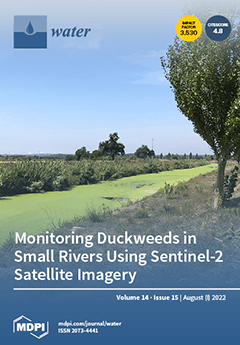Three years of hourly COD and NH
4+-N measurements for two full-scale integrated constructed wetlands (CWs) treating secondary effluents from sewage treatment plants (STPs) were used to quantify the proper sampling frequency (SF). The modified coefficient of variation (CV
m) and average variation rate (VR
a) were calculated to monitor the dynamics and annual average performance, respectively. It was found that (1) under CV
m 5%, VR
a 5%, and VR
m 5%, the sampling intervals (SI) of COD can be set as 1.19 h, 526.5 h, and 110.1 h, respectively, and the
SI of NH
4+-N should be 4.51 h, 66.3 h, and 26.8 h, respectively; (2) under CV
m 10%, VR
a 10%, and VR
m 10%, the monitoring intervals of COD can be set as 11.92 h, 1401.7 h, and 233.5 h, respectively, and the monitoring intervals of NH
4+-N should be 30.73 h, 139.3 h, and 50.5 h, respectively. Therefore, to meet the need of monitoring the dynamic changes in data, hourly and 4 h
SIs were recommended for COD and NH
4+-N evaluation, respectively, when it is necessary to consider the operation and maintenance costs at the same time, 11 h and 30 h
SIs were proper for COD and NH
4+-N evaluation, respectively. The methods proposed in this study could provide reference to improve the management and evaluation level of full-scale CWs.
Full article





